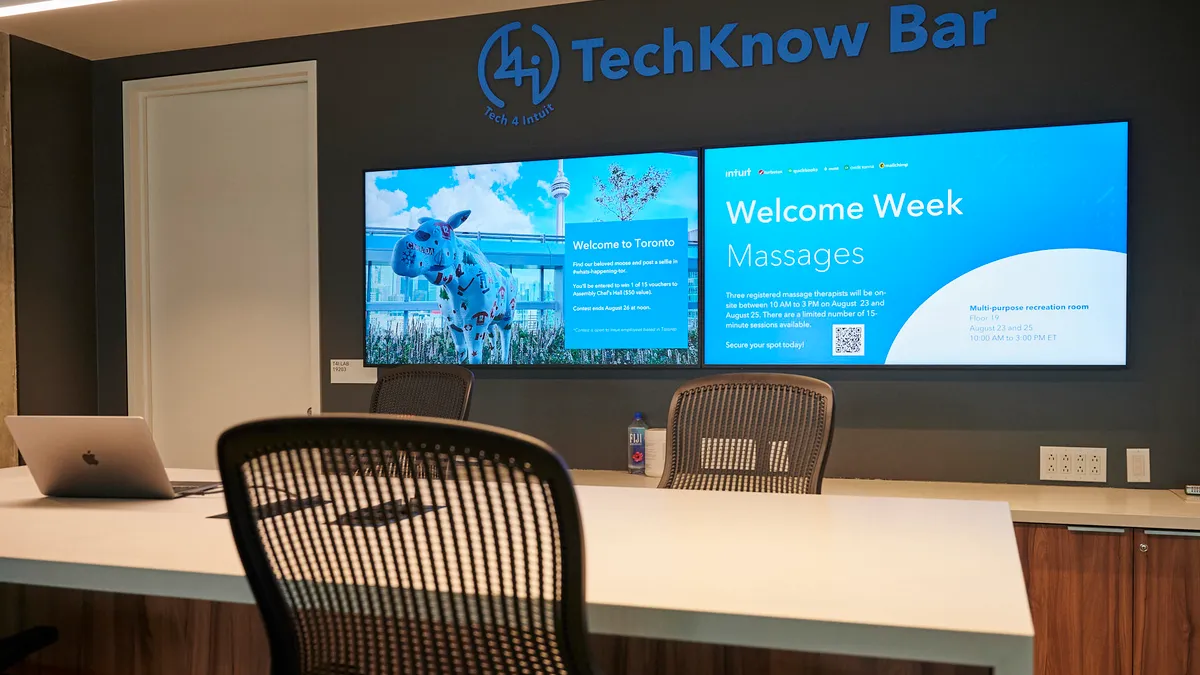Let’s face it: most tech workers do not want to come into the office.
Nearly two-thirds of IT employees reported the inability to work remotely was a job deal-breaker, according to research from Eden, which surveyed 1,000 full-time U.S.-based employees in the tech industry.
Throughout the economy, the sentiment remains the same. Two-thirds of workers across industries said they would quit if required to return to the office full-time, according to career site Monster, which surveyed 1,806 employees.
Some companies are treating the change in work style preference as the new normal, while others are working to change office spaces so employees have something to gain from coming into the office.
In order to find out what employees were missing out on by working at home, Intuit surveyed around 10,000 of its employees to get their perspective.
“What we found was really striking,” Otto Krusius, VP of workforce and workplace strategy at Intuit, said. “Employees were really hungry for in-person collaboration and connections, so we’ve designed a model that’s built around their input.”
Outside data supports the hypothesis as well. Two-thirds of hybrid workers said they feel like they’re missing out on collaboration opportunities when they’re not working in the office, according to a survey of 2,000 full-time employees by Enboarder last year.
The things that employees love about in-person collaboration cannot be mimicked remotely. However, with employees back in the office, technology can enable collaboration in a new way. While technology was the enabler for remote work, it can also give organizations an edge on-site.
“One of the things we’ve learned over the years is that if technology leads or places lead and the other follows, it doesn’t produce as good of an outcome [compared to] if we’re together co-designing the workspaces,” Atticus Tysen, SVP Product Development, Chief Information Security and Fraud Prevention Officer at Intuit, said.
Imagine an empty conference room. If tech is put in first, there won’t be consideration regarding where people are seated in the room. If furniture is put in first, technology then has to be shoehorned in.
It might work, but there are too many unconsidered variables for it to be the best.
The technology, like the furniture, has to be usable. Intuit relies on utilization sensors to see how many people are coming in, which spaces they choose to use and for how long.
These metrics give leaders insight into whether they should provide more open spaces or closed offices, what technology employees use and how many monitors they want at their workstation.
“I’m in the San Diego office today and for the rest of this week I’ll be working out of this office,” Tysen said, during the interview while in a closed office space. “Even while I’m here, I’ll use this office for a couple of hours today because I need it and then I can transfer out to a more open space.”
Intuit’s newest office opened in Toronto at the end of September. The 116,000 square foot office features spaces ranging from quiet areas, such as prayer or meditation rooms, to active areas for both individuals and teams.
But with over 20 campuses, changes to physical spaces require incremental changes.
“I think here in Mountain View, [California], as an example, we have something like 10 different buildings, so it’s not going to turn on a dime,” Krusius said. “We’re using the data that we have to reconfigure the space over time based on what we see employees actually wanting to do, needing to do in the space.”
It’s also not a one-size fits all approach, Krusius said. Intuit is not imposing a return-to-work policy, but rather is allowing managers and teams to determine the hybrid work approach that best benefits them, as of May 2022.
“We’re letting the data and the actual use of the space and the way that teams are working guide us,” Krusius said. “The shift in the pandemic happened overnight, everyone had to go home. Now, we have the ability to be really deliberate about how we build this new way of working.”













